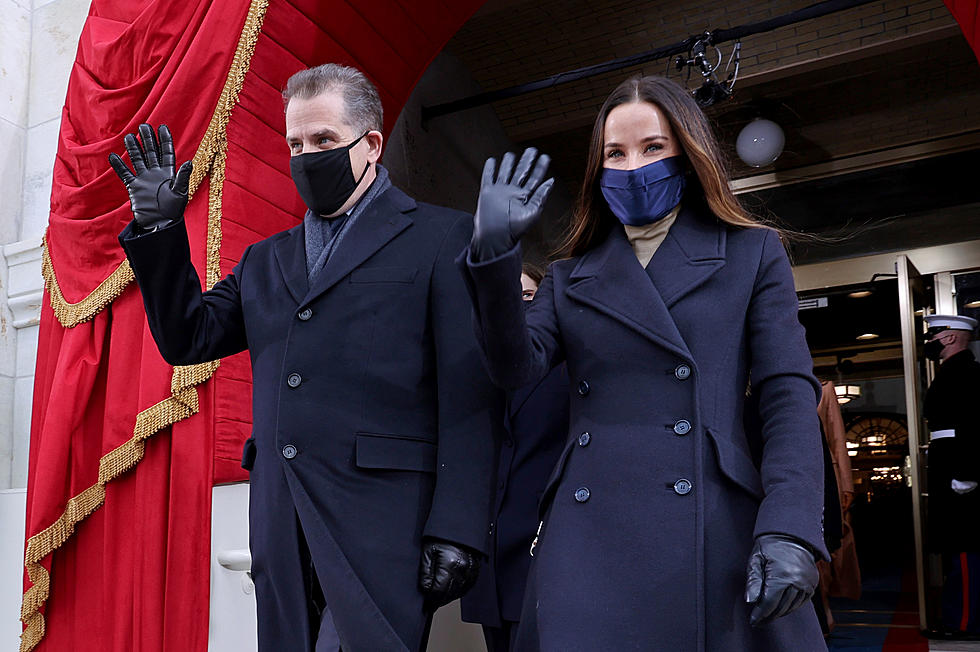Summertime, And The Devil’s Horses Are Crawling
NEW ORLEANS (AP) — Summertime ... and the lubbers are crawling. The thumb-sized, shiny black insects — also called devil's horses or, in Cajun French, chevals-diable — are grasshoppers that can hardly hop.
Hatched in the spring, eastern lubber grasshoppers are now adult and easily visible around south Louisiana and nine other Southern states. But they won't leap or fly at you or away from you.
Lubbers are too big for more than a clumsy jump, and their wings are too small to fly, said Tim Schowalter, head of the entomology department at the LSU AgCenter in Baton Rouge.
The bugs don't have to rush out of harm's way because they're toxic, sickening the birds and mammals that eat them.
When handled by humans or other creatures, they have the disgusting "tobacco spit" habit common to grasshoppers, regurgitating a dark brown liquid that's actually recently eaten leaves or flowers. They also hiss and bubble toxic foam around their hind legs, Schowalter said.
Still, he said, the bugs are harmless to people who pick them up. In large numbers, according to the University of Florida extension service, they can damage crops or decorative plants, especially amaryllis. But they tend to be solitary.
"I've never seen enough in one place that it'd be a problem," Schowalter said.
The insects are found in 10 states from east Texas to central North Carolina, including a bit of Arkansas, south Mississippi, southern Tennessee, much of Alabama, Florida, Georgia and much of South Carolina. In much of that territory, the adults are brightly colored — yellow or orange with black markings.
"Down here they're black," Schowalter said. "At least between here and Mobile, they're all black with the red stripe on the adults."
Lubbers can hop short distances when they hatch by the hundreds from eggs laid underground near water. But even then, they're no great leapers. The half-inch-long, red bodies often carpet a square foot or more above their hatching spot. They then crawl up the nearest plants and begin munching industriously.
As juveniles, they hang out together, sometimes in the thousands. Their main food is weedy vegetation such as nettles and pokeberry, Schowalter said.
Within 48 hours after being hatched, the grasshoppers turn black with one or more red, orange or yellow stripes down their backs. Then they grow, and grow, and grow. As adults, they're the country's largest grasshoppers — many are 3 inches long and Showalter says they run up to 4 inches — with slender legs and wings only about half as long as their big, fat bodies.
Though conspicuous, Schowalter said, the grasshoppers cause little trouble.
They can accumulate along weedy, wet drainage ditches or field margins and then feed on cultivated crops or ornamental plants, especially amaryllis and related flowers, according to a fact sheet from the University of Florida extension service.
"Occasionally, on rural highways in the central portion of the state, enough flattened lubber grasshoppers will accumulate on the road to cause a minor slick!" it said.
Mowing the grass will keep numbers down, Schowalter said.
Those found damaging wanted plants can be killed by picking them off and throwing them into a bucket of soapy water or a trash bag, he said.
If there are too many to control by hand-picking, Schowalter said, use insecticide with carbaryl, bifenthrin, cyhalothrin, permethrin or esfenvalerate, being careful to follow instructions on the label. But you have to spray the bugs themselves, not the plants, "sort of like spraying a wasp's nest," he said, because lubbers can get too big to be killed by the small amounts of residue on sprayed plants.
"I don't think they're enough trouble to be worth spraying. But not everybody agrees," he said. "I prefer the nonchemical when we can get by with it."
More From News Talk 96.5 KPEL









